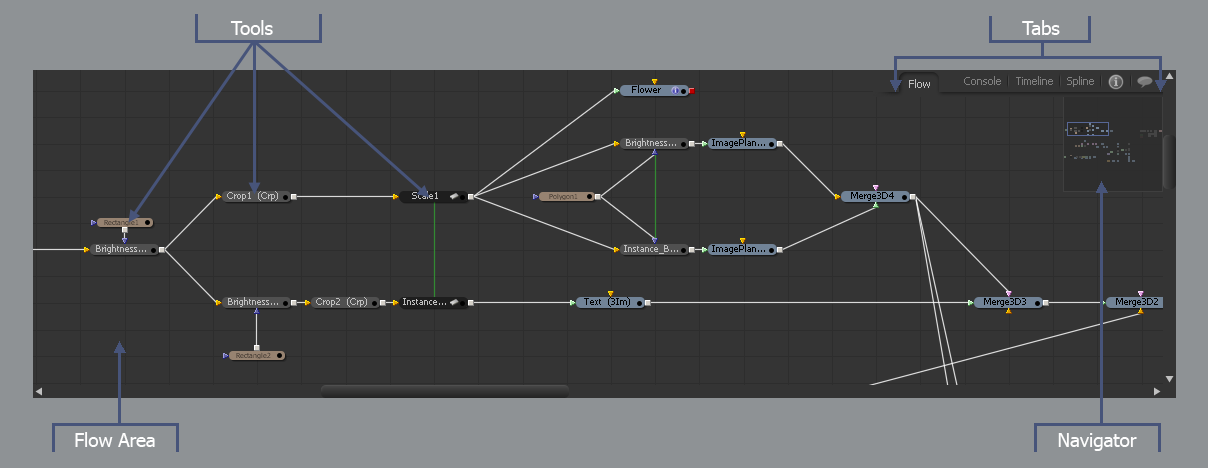Eyeon:Manual/Fusion 6/Interface Overview/Flow Editor/Flow Overview
From VFXPedia
[ Main Manual Page ]
- Flow Overview
- Viewing, Scaling and Panning the Flow
- Context Menus
- Adding Tools
- Connecting and Disconnecting Tools
- Inserting Tools
- Replacing Tools
- Deleting Tools
- Connection Types
- Moving Tools and Organizing the Flow
- Groups
- Displaying Tile Pictures
- Viewing Tools
- Tooltips and the Status Bar
- Copying and Pasting Tools
- Instancing Tools
- Finding Tools
- Macro Tools
- Flow Options
- Tool Context Menu
- Tool Tile Color Coding and Icons
Contents |
Flow Overview
The Flow Editor is displayed below the large image display and is Fusion's primary workspace. The flow provides a schematic-type overview of the structure of the project. Each tool is represented by a tile in the workspace, with connections to and from the tile to indicate how each tool relates to the overall processing of the image result.
This workspace is known as the flow because images move through the connections like water through pipes. By watching the flow of images through the pipes, an intuitive overview of the current image processing operations can be formed.
This view offers tremendous flexibility for connecting tools, including the ability to branch a tool's output into separate streams and collapse entire groups of tiles to view a thumbnail image of a tool's, or several tools', outputs.
The following illustration shows a simple flow. This flow contains a loader that brings footage in from disk and that loader is connected to a resize tool. The resize tool is, in turn, connected to a saver for rendering the result to disk.
The next illustration shows a more complex flow. It combines multiple layers of footage and demonstrates the idea of branching.
Note
Previous versions of Fusion would save projects to disk using the file extension .flw. This was commonly referred to as a flow. The use of the term flow to refer to a part of the interface as well as the saved project caused some confusion. eyeon renamed the saved project to .comp (for composition). As of version 5, the term flow refers to this portion of the interface only.


